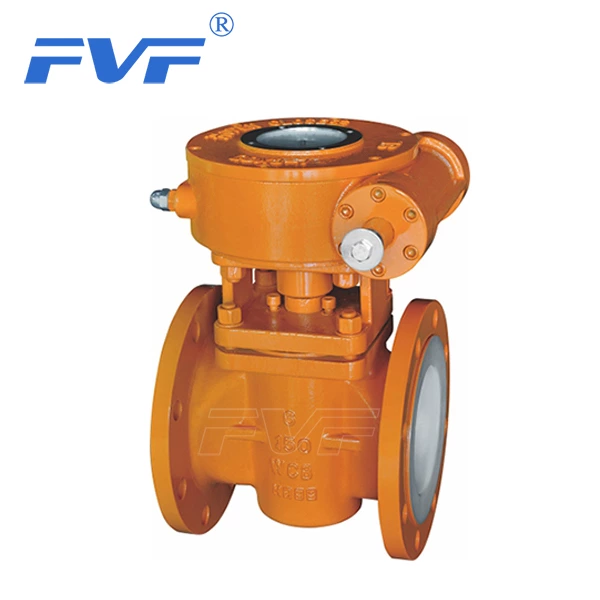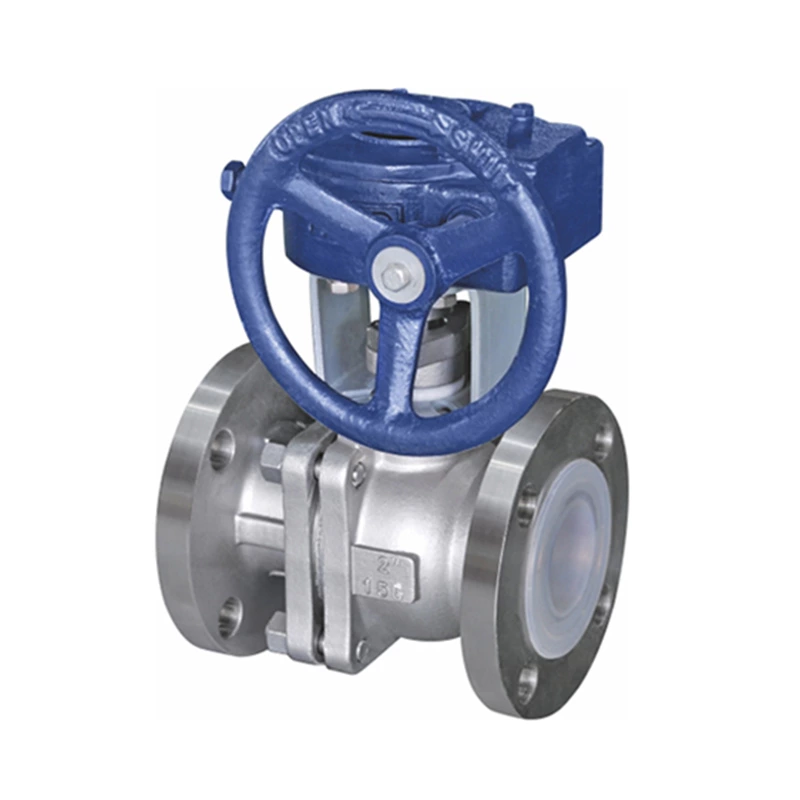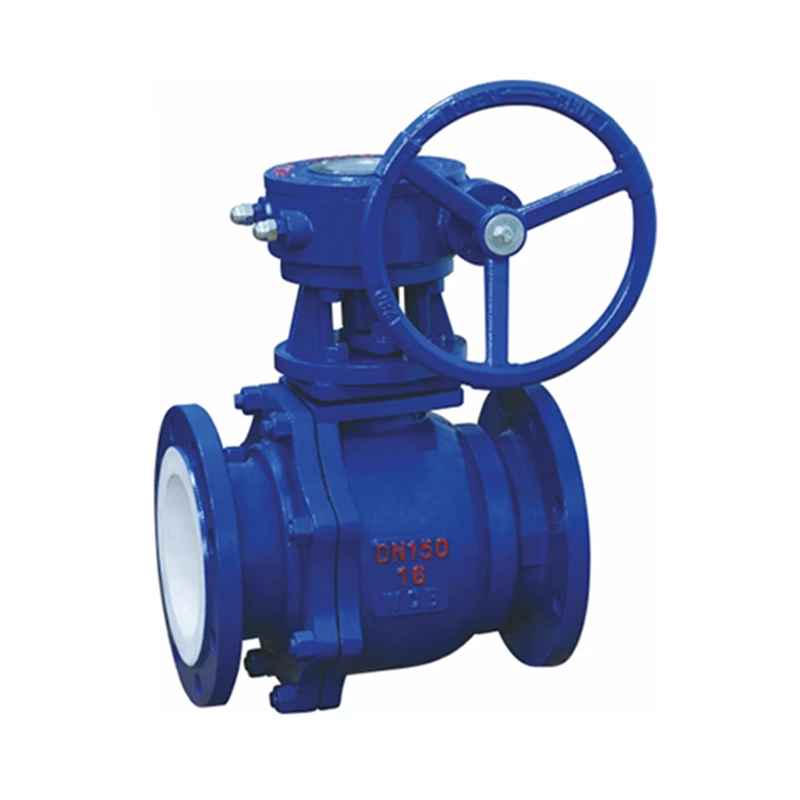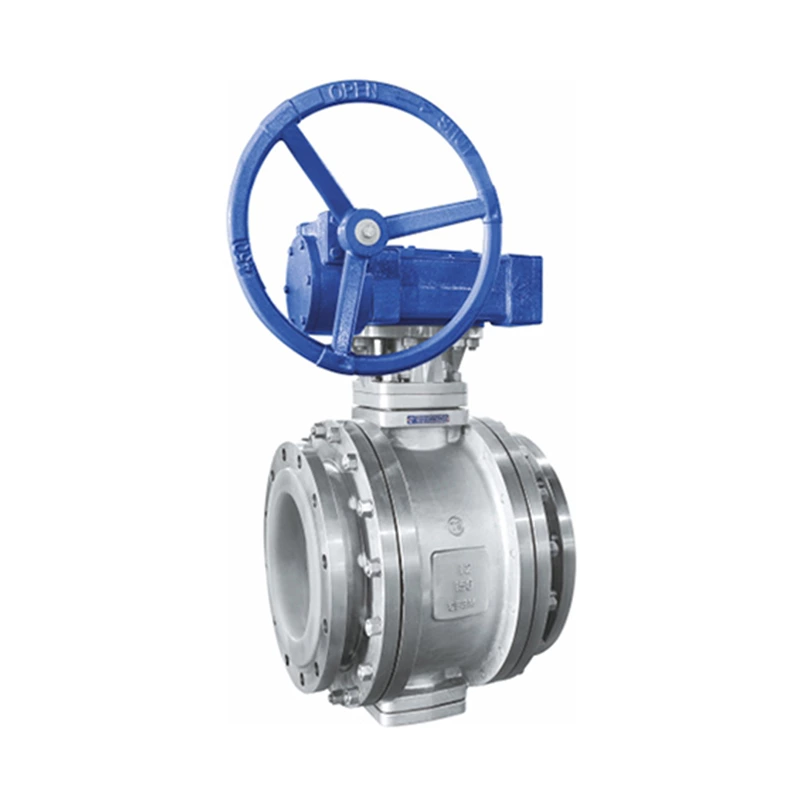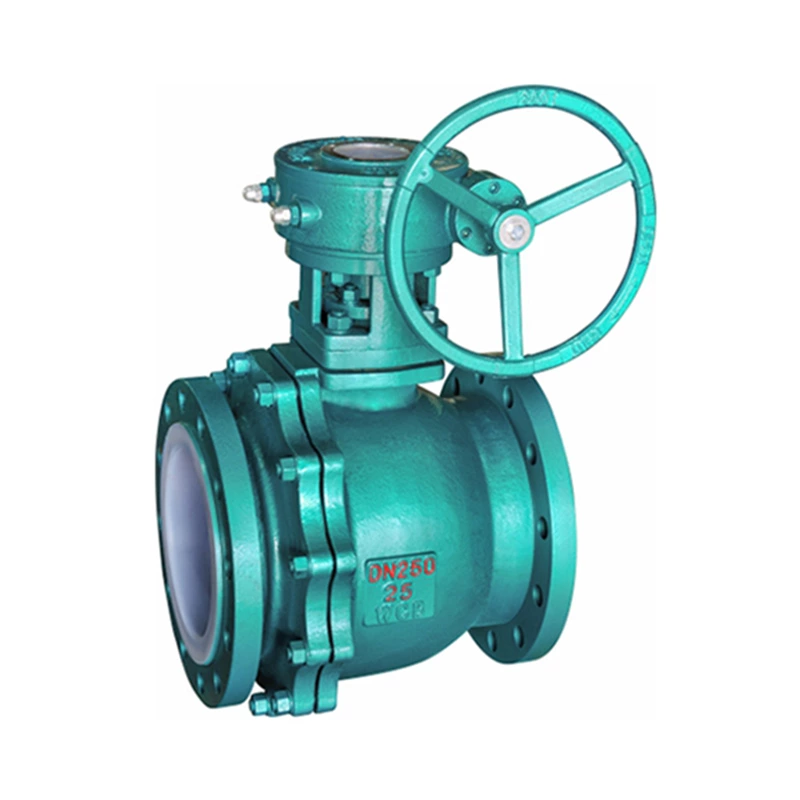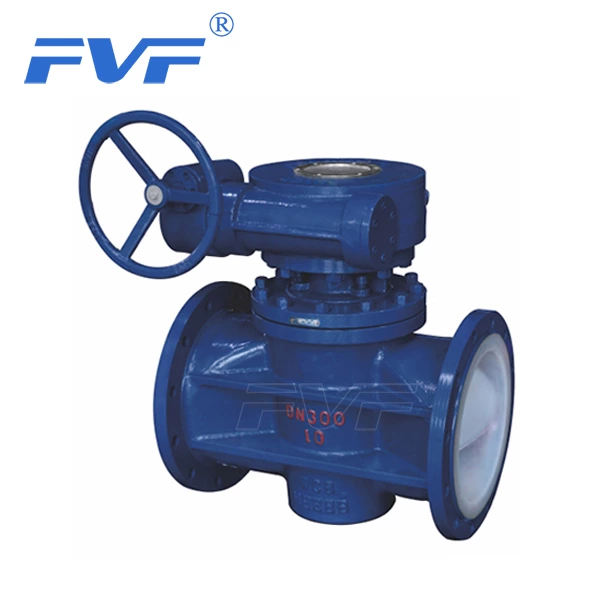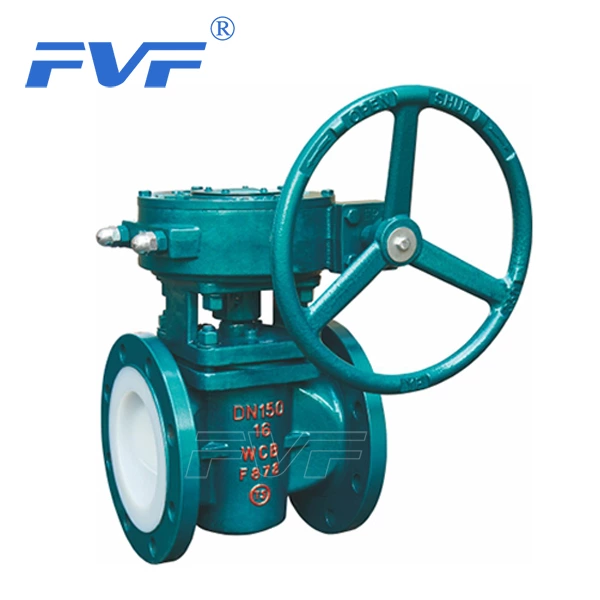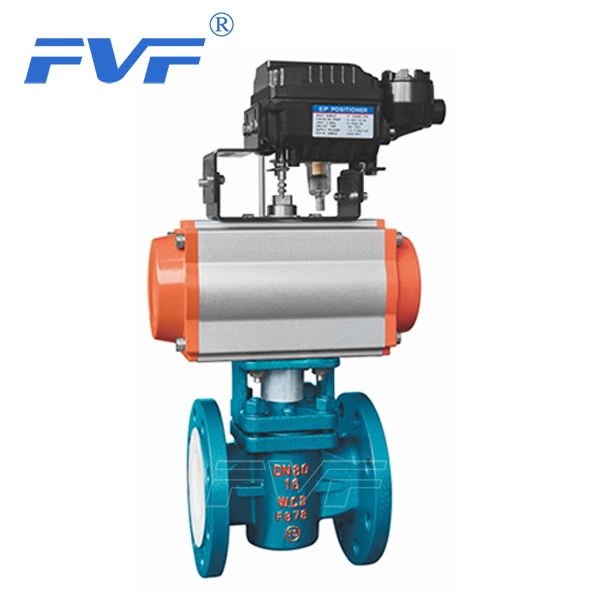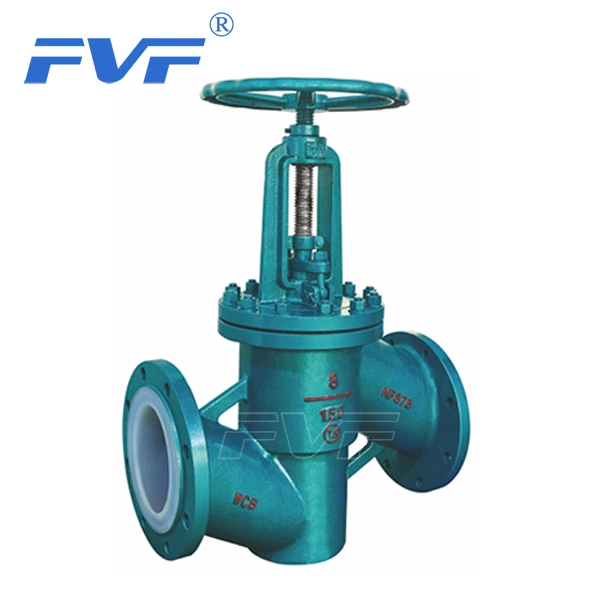Main Performance Parameters Of Valves: Nominal Diameter, Pressure, Temperature
Main performance parameters of Lined Valve: nominal diameter, pressure, temperature
1. Nominal diameter DN
The nominal diameter is the size of all pipe accessories in the piping system expressed in numbers to distinguish those parts expressed by threads or outer diameters. The nominal diameter is a rounded number used as a reference and is not completely equivalent to the processing size in terms of numerical value.
The nominal diameter is marked with the letter "DN" followed by a number. For example, a nominal diameter of 100mm should be marked as DN100.
2. Nominal pressure PN
The nominal pressure is a pressure-related marking code expressed in numbers, which is a convenient round integer for reference. All pipe accessories with the same nominal diameter indicated by the same nominal pressure PN value have the same connection size corresponding to the end connection type.
In my country, when it comes to nominal pressure, for the sake of clarity, the unit of measurement is usually given, expressed as "MPA". In countries such as the United Kingdom and the United States, although the concept of nominal pressure has been included in the relevant standards, the British unit Class is still used in actual use. Since the temperature reference of nominal pressure and pressure level is different, there is no strict correspondence between the two. For the approximate correspondence between the two, see the table.
There is a "K" grade system in the Japanese standard, such as 10K, 20K, 40K, etc. The concept of this pressure level is the same as the pressure level system in the British unit, but the unit of measurement is in the metric system.
III. Pressure-temperature rating
The pressure-temperature rating of a valve is the maximum allowable working pressure expressed in gauge pressure at a specified temperature. When the temperature rises, the maximum allowable working pressure decreases accordingly. The pressure-temperature rating data is the main basis for the correct selection of flanges, valves and pipe fittings at different working temperatures and working pressures, and is also a basic parameter in engineering design and manufacturing.
The pressure-temperature ratings and data of various materials are shown in Chapter 4. Many countries have formulated pressure-temperature rating standards for valves, pipe fittings and flanges.
1. American Standards
In American standards, the pressure-temperature ratings of steel valves are in accordance with ASME/ANSI B16.5a-1992 and ASME B16.34-1996; the pressure-temperature ratings of cast iron valves are in accordance with ANSI B16.1-1989~B16.4-1989, ANSI B16.42-1985: the pressure-temperature ratings of bronze valves are in accordance with ASME/ANSI B16.15a-1992, ASME B16.24-1991 regulations.
1) The United States ASME/ANSI B16.5a-1992 specifies two flange size series, imperial and metric, and lists the flange pressure-temperature ratings for both units. Appendix D of the standard gives the method for determining the pressure-temperature ratings in imperial units.
2) The United States ANSI B16.42-1985 "Ductile Iron Pipe Flanges and Flange Fittings" standard specifies the CL150 and CL300 ductile iron flange pressure-temperature ratings. The standard appendix also specifies the method for formulating the pressure-temperature grade, and its basic principles, scope of use, restrictions and formulation procedures are basically the same as ASME/ANSI B16.5a-1992.
3) The United States ASME B16.34-1966 incorporates the temperature-pressure rating data of flange-connected valves in ASME/ANSI B16.5a-1992. The pressure-temperature ratings of flange-connected valves in this standard adopt the ASME/ANSI The formulation method of B16.5a-1992. This standard lists the pressure-temperature rating data table for standard-grade valves with flange connection and butt-weld connection and special-grade valves with butt-weld connection. There are more than 100 valve materials listed in the standard, which are divided into 27 groups.
2. German Standard
The German standard DIN2401-1977, Part II, "Pipeline pressure level, allowable working pressure of steel and cast iron pipeline components", is a relatively comprehensive pressure-temperature rating standard. Among them, the allowable working pressure of seamless pipes, welded pipes, flanges, valves, pipe fittings and bolts under different materials and different temperature conditions is listed. The standard includes 6 types of flange materials, 4 types of flange-connected cast iron valve materials, 5 types of cast steel, and 5 types of forged steel, all of which are original materials. Steel materials are all carbon steel and low alloy steel, and stainless steel is not included. The standard clearly stipulates that when other materials different from the original materials are selected, the allowable working pressure is calculated based on the ratio between the strength characteristic value of the material used and the strength value of the original material specified in the standard at 20°C. For the pressure-temperature rating of stainless steel materials, ISO/DIS70651 "Steel Flange" provides additional explanations.
3. Former Soviet Union Standards
The former Soviet Union standard TOCT356-1980 "Nominal Pressure, Test Pressure and Working Pressure Series of Valves and Pipeline Accessories" all complies with the CMEA standards. In the former Soviet Union standards, materials are grouped. In this standard, the maximum allowable working pressure values below 200°C are regarded as working pressures at room temperature and are equal to the nominal pressure.
4. International Standards
The international standard ISO/DIS7005-1-1992 "Ordinary Pipe Flange" combines the flange standards of the nominal pressure level in the American standard ASME/ANSI B 16.5a-1992 and the German standard. Therefore, the pressure-temperature rating standard also adopts the formulation methods and corresponding data of the flange pressure-temperature rating standards of the United States and Germany. The nominal pressure grades PN0.25, 0.6, 1.0, 1.6, 2.5, 4.0MPA in ISO/DIS7005-1-1992 belong to the German flange system; PN2.5, 10, 15, 25, 42MPA belong to the American flange system. The pressure-temperature rating standard of each system is only applicable to the flange standard of its own system.
5. my country's national standards
The national standard GB/T9124-2000 (Appendix A) "Technical Conditions for Steel Pipe Flanges" refers to the principles and methods for formulating pressure and temperature ratings in the German DIN2401-1977 and the American ASME/ANSI B 16.5a-1992 standards, and uses the commonly used flange materials in my country. With reference to the international standard ISO/DIS7005-1-1992, flange pressure-temperature ratings applicable to two nominal pressure series (PN0.25-4.0MPA, PN2.0-42.0MPA) are formulated. The standard specifies the maximum allowable working pressures of 13 flange materials at 12 nominal pressure levels and working temperatures of 20-530°C.
